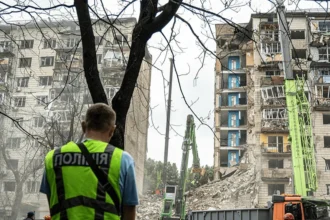In a groundbreaking venture, scientists are preparing to drill into one of the world’s most active volcanic hotspots, located in Iceland. The volcano, known as Kraflar, has erupted 30 times over the past millennium, with its most recent eruption occurring in the 1980s. This ambitious drilling project aims to enhance our understanding of volcanic behavior, which could lead to better eruption predictions and a novel energy source from extreme geothermal heat.
The Challenge of Living Near Volcanic Hotspots
Volcanoes, while majestic, pose significant risks to millions of people living in their vicinity. In Iceland, residents of Grindavík have experienced frequent disruptions due to volcanic activity. Scientists hope their drilling efforts will not only mitigate these risks but also contribute to energy advancements. The region is already home to a geothermal power plant with around 40 wells, producing a mix of hot water and steam that supplies electricity to approximately 30,000 homes.
Discovering the Unexpected
The drilling project took a surprising turn in 2009 when scientists encountered an unexpected find: a shallow pocket of magma. Initially aiming to drill to a depth of 4.5 kilometers, the team discovered magma at just 2.1 kilometers, much closer to the surface than anticipated.
How Nuclear Energy for Data Centres Powers AI Growth
The extreme heat from this molten rock was so intense that it destroyed their equipment. However, the data collected indicated that the well produced approximately ten times more energy than the average well in the area, revealing the potential of this powerful geothermal resource.
Future Plans and Innovations
The Kraflar Magma Test Bed (KMT) project, set to commence in 2026, will aim to establish the first underground magma observatory. Scientists plan to drill into the magma chamber located 2 kilometers below the surface. This observatory will be equipped with sensors to monitor temperature and pressure, enabling more accurate predictions of volcanic activity. Additionally, the project will explore a new form of geothermal energy known as near-magma geothermal energy. The goal is to drill just short of the magma and potentially harness geothermal resources with temperatures ranging from 500°C to 600°C. Two such wells could match the output of the current geothermal plant, which requires 22 normal wells.
Overcoming Technical Challenges
Drilling into a magma chamber presents significant technical challenges. Researchers at the University of Iceland are testing materials to withstand the extreme heat and pressure involved. Traditional carbon steel, commonly used in geothermal wells, quickly loses strength at temperatures above 200°C and is not corrosion-resistant. The team is exploring new materials, including high-grade nickel and titanium alloys, to address these issues.
Addressing Safety Concerns
While the concept of drilling into a magma chamber may seem risky, scientists are confident in the safety of the operation. The 2009 drilling incident provided valuable insights, revealing that similar efforts had likely been conducted in the past without any explosive consequences. Researchers believe that this technique can be safely replicated and applied in other volcanic regions worldwide, such as East Africa, the United States, and Hawaii.
Global Potential for Geothermal Energy
This ambitious drilling project holds significant promise for the future of geothermal energy. If successful, it could revolutionize how we monitor volcanic activity and unlock a new, virtually limitless source of clean energy. The Kraflar Magma Test Bed project represents a critical step towards advancing geothermal technology and supporting the global green energy transition.
Scientists and energy experts are watching closely, as the results of this project could pave the way for similar initiatives around the world, demonstrating the vast potential of geothermal power in mitigating volcanic risks and contributing to sustainable energy solutions.








